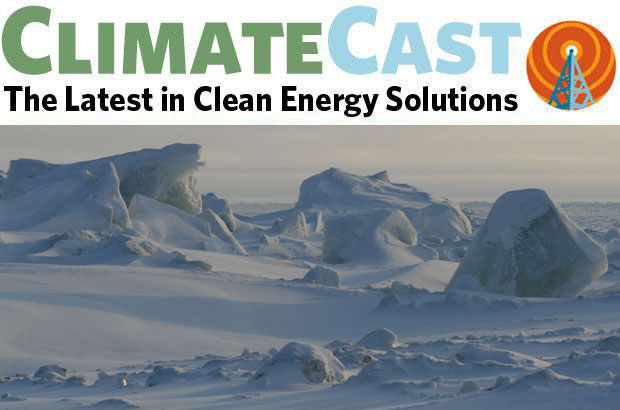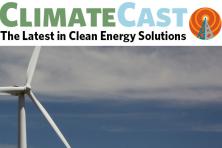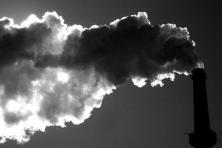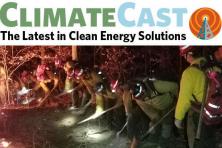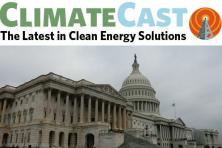The Willow project: a “carbon bomb” beyond the political calculus
The Biden administration approved a $7 billion plan to extract 600 million barrels of oil from pristine federal land in Alaska, in a deal called the Willow project. The approved project is a slightly trimmed down version (three drilling sites instead of the five approved by the Trump administration) and located inside the National Petroleum Reserve-Alaska (one of the fastest warming areas of the world).
Sound a little different than the promise of “no more drilling on federal lands” made by the Biden campaign? Yes, definitely. If completed, this project would produce the equivalent of an estimated 263 million tons of carbon dioxide over 30 years. This is about the same as building 20 new gas plants and running them for the same time period; burning 8.8 billion pounds of coal every year for 30 years; or adding 1.7 million cars to the road. In the face of the outrage and a pending lawsuit, Biden officials and even Biden himself went on damage control. Biden responded to calls of hypocrisy on The Daily Show saying addressing climate change is a “matter of transitioning” and that “it’s not like you can cut everything off immediately.” White House Climate Advisor (and Climate Solutions’ Momentum event guest speaker) Ali Zaidi took a more positive and emotionally intuitive approach saying while Willow’s approval was constrained by the “legacy of decisions” from previous administrations, people have a right to feel upset and should feel inspired to act. “I think the answer is not to not feel the emotion. The answer is to translate [those emotions] into, ‘How do we get to work harder?’”
Heat pumps + efficiency upgrades = comfort and climate happiness
Energy-efficient heat pumps got a close look in the Seattle Times, with a front-page article by Hal Bernton. These climate-friendly alternatives to gas furnaces will be installed in all new construction in Washington state, but can also help make older homes more efficient, affordable and comfortable year-round. Most of the 120 homeowners who shared their installation experiences with the Times reported being satisfied with their transition.
What the article misses is the importance of pairing energy efficiency upgrades with new appliances like heat pumps when planning a home retrofit. Old homes can be drafty, and many homes’ older, inefficient gas furnaces have been heating the out-of-doors as well. (Here’s more on why climate advocates are urging state legislators to include weatherization in their efforts to fight climate change.)
Thanks to new federal incentives, homeowners will soon have access to robust tax credits and subsidies to help pay for energy updates, including both heat pumps and efficiency upgrades. State legislatures are currently developing programs of their own which could help residents understand and access the various incentives available.
Environmental justice coverage cues right-wing backlash
In the car-centric metropolis of Los Angeles, those who drive less or not at all are actually exposed to more air pollution than those who drive a lot. That’s the surprising finding of a new USC study, which concludes that “decades of racially-motivated freeway infrastructure planning and residential segregation shape today’s disparities in who produces vehicular air pollution and who is exposed to it.” LA Times climate journalist Sammy Roth wrote about these conclusions in an article titled “How white and affluent drivers are polluting the air breathed by L.A.’s people of color.” Roth teased out the study’s environmental justice implications: “It may sound like a paradox, but it’s not. It’s a function of the racism that shaped this city and its suburbs, and continues to influence our daily lives—and a stark reminder of the need for climate solutions that benefit everyone.”
The study’s findings only add to the voluminous research showing that air pollution disproportionately harms low-income communities and communities of color (See, for example, this KQED piece on the history of highway design and environmental racism). Nevertheless, Roth’s title sent a number of right-leaning commentators at Fox News into a culture war huff. The network ran at least five segments in a single day attacking Roth’s piece, as documented by Media Matters. One host characterized the article’s message as “if you are white and a driver in Los Angeles, then the liberal media thinks that you are racist.”
Here’s more from Media Matters on how broadcast TV networks covered climate change in the past year.
Electric sweepers sweep WA – and could in more communities
Companies and communities around the state are considering clean energy vehicles like electric fire trucks, school buses, and electric sweepers. This new generation of vehicles can cut carbon pollution, end reliance on costly and unpredictable diesel fuel, improve local air quality and reduce noise.
Cities in Southwest Washington and Puget Sound hosted electric sweeper events this week to allow leaders and press to check out these vehicles, which are already in use in other states. These demos brought in some great news coverage for zero emission heavy-duty vehicles. They were also timed to help make the case for the Washington Legislature to fund a new program for a point-of-sale voucher program to make heavy-duty electric vehicles more affordable for organizations pursuing a transition to zero-emission fleets. A broad coalition including the Washington Trucking Associations, African Chamber of Commerce of the Pacific Northwest, several unions and climate and health organizations sent a joint letter to the Washington State Legislature calling for major investments for big zero-emission vehicles.
One thing you can do
In Oregon, lawmakers are considering a package of bills promoting resilient, efficient buildings, including measures that will cut carbon emissions, increase energy affordability, create clean energy jobs, and leverage new federal clean energy investments to benefit Oregon communities. This effort is being led by the Building Resilience coalition; check out their website here!
In Washington, lawmakers have the opportunity to take a real bite out of the state’s transportation emissions by funding programs to increase electrification of medium- and heavy-duty vehicles like garbage trucks, delivery vans, school buses, and 18-wheelers. Washingtonians can learn more and urge their legislators to support investments in clean transportation.
